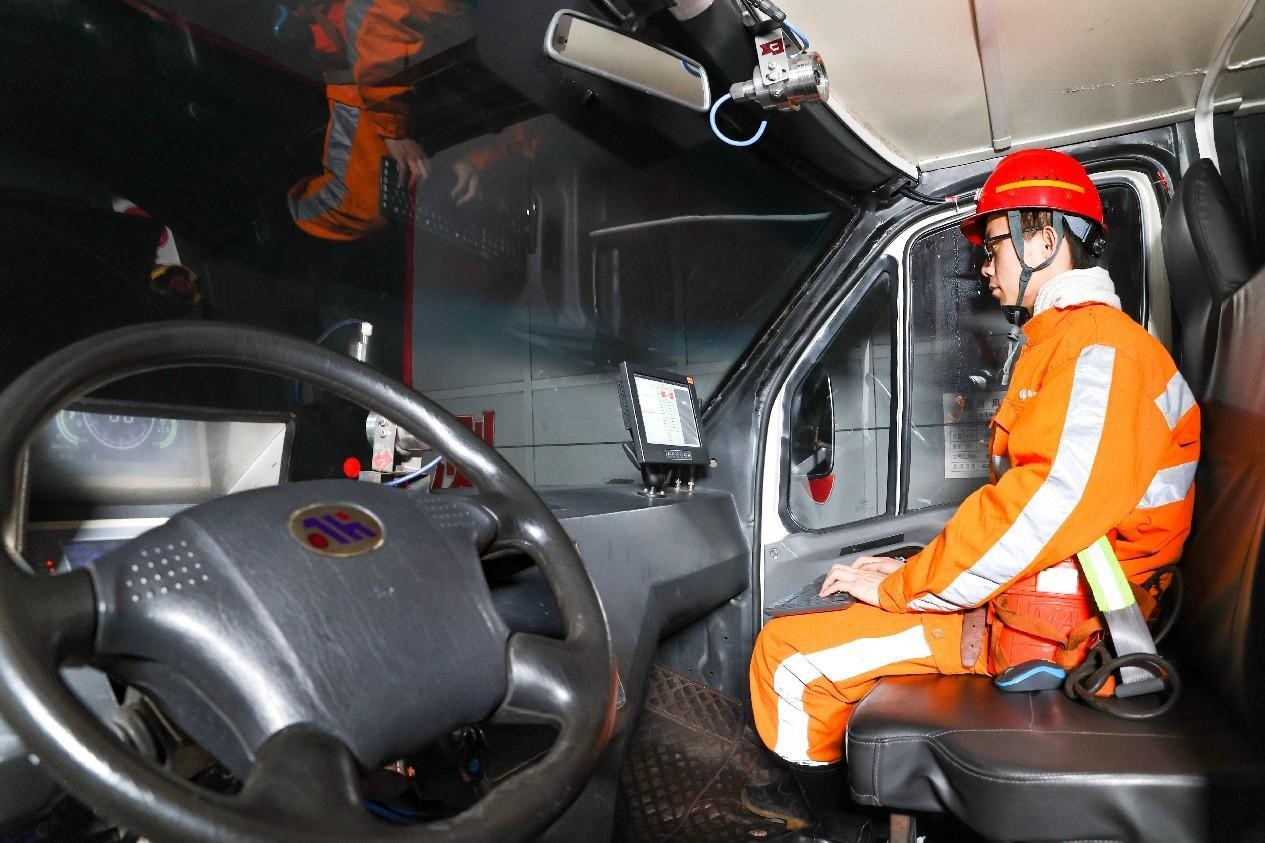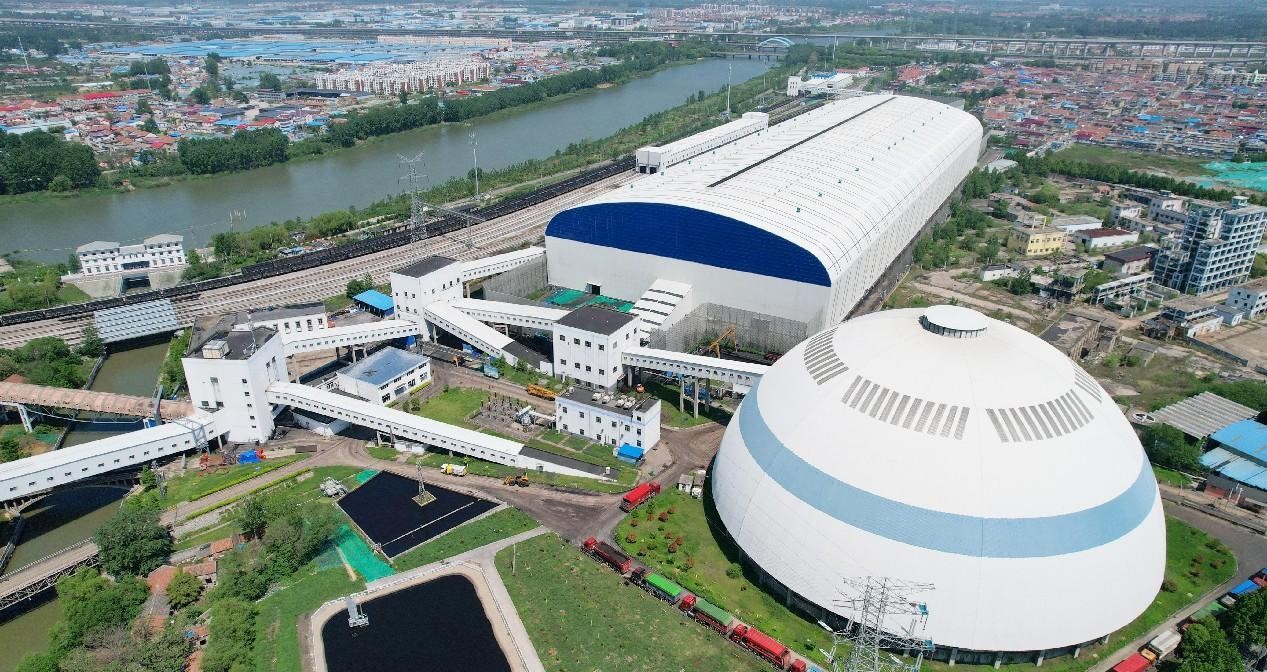China's coal industry turns greener through innovative approaches
At an opencast mine operated by Inner Mongolia Pingzhuang Coal Group Co. Ltd., a subsidiary of CHN Energy Investment Group (CHN Energy), a 14-meter-high electric loader was working. The machine weighing 490 tons could scoop up 16 tons of coal in its bucket.
However, there was no one in the loader's cabin. The machine was remotely controlled by operator Zhao Xiujun three kilometers away.

Photo shows a rural tourist destination turned from a coal mine in Yibin, southwest China's Sichuan province. (People's Daily Online/Lan Feng)
"With 5G technology, tilt sensors, temperature sensors and speed sensors, we can obtain precise retrieval of bucket position information, which helps reduce dust and noise," said Zhao.
The technology is also prevalent in the opencast mines. For instance, the high-platform radar monitoring system can rapidly identify potential dangerous zones, shorten warning time, and help increase coal production yields; the intelligent blasting system can improve the accuracy of blast hole positioning to less than 5 centimeters, reducing the time for positioning 500 holes from one day to just two or three hours.
This is a vivid example of China's efforts to promote the clean utilization of coal. Coal, a main energy source in China, accounts for over 55 percent of the country's total energy consumption. As China accelerates the green development of energy, the coal industry is showing stronger momentum with a new image.
Green development does not mean eliminating coal consumption but rather promoting clean and efficient utilization of coal in line with national conditions.
China's energy consumption will continue to grow steadily in the foreseeable future. Accelerating the transformation and upgrading of the coal industry and promoting clean and efficient utilization of coal is undoubtedly a practical choice to reduce pollution and carbon emissions while ensuring energy supply.
China is working to transform its coal industry towards high-end development to enhance the utilization efficiency of coal as a chemical raw material and foster new growth drivers.

A safety supervisor sits on a new energy underground mining vehicle within a coal mine operated by Shendong Coal, a subsidiary of CHN Energy Investment Group (CHN Energy), in Erdos, north China's Inner Mongolia autonomous region. (People's Daily Online/Wang Zheng)
For example, China's Shaanxi Future Energy and Chemicals Co., Ltd. has produced a high-end Fischer-Tropsch wax with a high melting point, using the wax oil produced from its coal-to-oil plant. This product can be applied in plastic processing and rubber tire manufacturing, breaking the technological monopoly of other countries. Its price has remained stable and increased since this year, with all available stock already pre-ordered.
Besides, the company has developed a diesel fuel that can withstand extremely low temperatures, functioning effectively even in conditions below minus 20 degrees Celsius, by using high-value added absolute ethanol made from coke oven gas.
Developing high-value-added, refined, and differentiated products through technological innovation not only creates economic benefits but also ensures the stability of the industrial and supply chains.
China is working to transform its coal industry towards intelligent development to enhance safety and efficiency. Coal production is often accompanied by water hazards, fires, and rock bursts. Developing intelligent mines can mitigate high-risk situations and improve safety and efficiency.
One illustration of this is a coal mine in east China's Shandong province, where intelligent transformation measures have resulted in a decrease in the workforce on a single working face from 15 to 5, and an increase of about 50 percent in monthly coal production.
By the end of April this year, there were 1,922 intelligent coal mining faces and 2,154 intelligent tunneling faces in China, leading to the rapid development of industries such as mining Internet of Things (IoT) and coal mining equipment manufacturing.

Photo shows a dry coal shed built by a Chinese power generation enterprise in Lianyungang, east China's Jiangsu province. The shed was transformed from an opencast mine to minimize the impact of coal dust on the surrounding environment. (People's Daily Online/Geng Yuhe)
With a concerted approach to addressing challenges such as unbalanced construction and lack of key technological equipment, China's coal industry will become more intelligent.
China is working to transform its coal industry towards green development for better environmental protection and lower carbon emissions.
For instance, at a mining-themed ecological tourism site of CHN Energy Zhunneng Group, another subsidiary of CHN Energy, the once ravine-riddled subsided mining areas have been transformed into a theme park where visitors can enjoy both agricultural picking activities and guided tours of the coal mining sites.
Besides, Xuzhou Coal Mining Group in east China's Jiangsu province has repurposed coal gangue from coal washing for road construction and brick making.
To reduce carbon emissions in the coal industry, multiple regions in China are exploring carbon capture, utilization, and storage technologies. For example, carbon dioxide captured from coal-fired power plants can be used in welding and the production of food-grade dry ice. As technologies advance and become more affordable, coal is expected to transition into a low-carbon energy option.
Coal is a gift from nature. China is transforming coal, the "black gold," into "green gold," by advancing green and low-carbon technologies and improving the structure of its coal industry, providing stronger momentum for high-quality economic development.
Photos
Related Stories
Copyright © 2024 People's Daily Online. All Rights Reserved.









